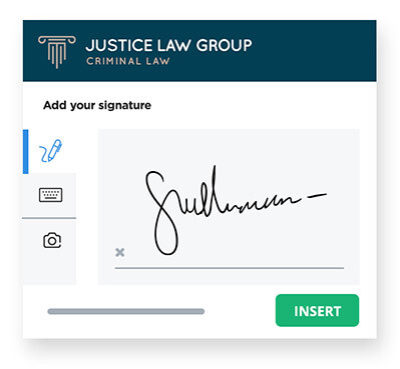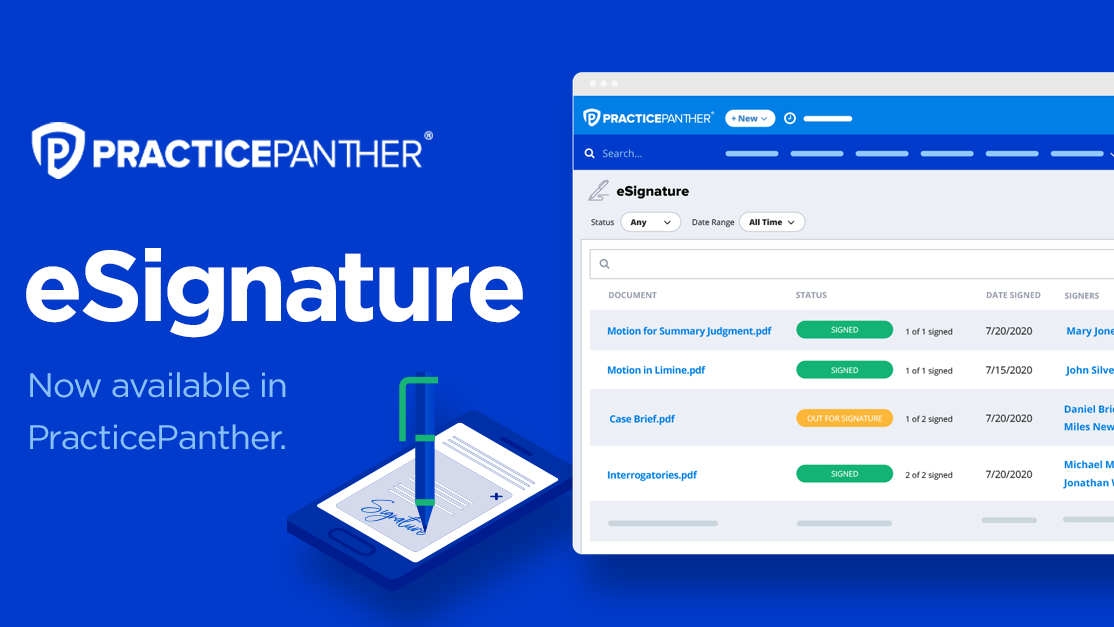The practice management platform PracticePanther today introduced native e-signatures, enabling law firms to send and obtain signatures on documents from directly within the platform, a feature that could both save time for users and streamline tasks such as client intake.
The feature is available free to subscribers to PracticePanther’s Business Plan and requires no separate subscription to a third-party e-signature product.
“In the past year, the legal industry has undergone a drastic shift in how it gets business done — from in-person to virtual,” Soumya Nettimi, CEO of PracticePanther and of its parent company Paradigm, said in announcing the feature. “Our native e-signature feature gives PracticePanther customers the option to move away from cumbersome paper-based signature processes and speed up their workflows while lowering security risks.”
In advance of today’s release, I was given a demonstration of the feature by Scott Gartenberg, product manager, and Dan Bowman, product marketing manager.
Signatures Dashboard
The feature is available out-of-the-box for the platform’s Business Plan subscribers, whose interface will now include a dashboard where they can manage and see the status of all their e-signature requests.
 For each document sent for signature, the dashboard shows whether the recipient has viewed or signed the request, the date the request was sent, the date the document was signed, the names of the signers, and the matter to which the document pertains.
For each document sent for signature, the dashboard shows whether the recipient has viewed or signed the request, the date the request was sent, the date the document was signed, the names of the signers, and the matter to which the document pertains.
While some e-signature tools allow only one document at a time to be sent for signature, PracticePanther’s allows users to send batches of documents in a single request.
They can also add up to 20 signers and can specify the order in which signatures will be requested simply by dragging and ordering the names of signers.
Firms can white-label the notifications that go out with signature requests and can customize their messaging.
If a firm is also a user of the PantherPayments e-payments feature, it can include a payment link in a signature request. This would be useful for sending an engagement letter for signature and simultaneously collecting the retainer.
Preparing A Document
To prepare a document for signing, the user can start from either the e-signature dashboard or the matter page. With the document to be signed opened in the viewer, a list appears alongside of the names of required signers. The user simply drags each name to the appropriate signature field on the document, and can also drag and add other fields, such as date signed, title, and company.
When done adding names, the user clicks send and the document goes out for signature. If sending a batch of documents, then as the user finishes each document, the user is taken to the next document to add fields.
Each signer receives the request by email and is taken to the e-signature page. If the user had specified an order of signatures, then as each person signs, the next invitation is sent.
Once all parties have signed, everyone receives an email notifying them and providing a link to download the final document.
All of this can be tracked in the dashboard, but a user can also see the status of signatures on the matter page and on the contact’s page. Users can also view and download a full audit trail for each signed document.
A Business Plan subscription to PracticePanther is $79 per user per month. PracticePanther also offers plans at $39 a month for solos and $59 a month, but they do not include the e-signature feature.
For more information on PracticePanther’s new e-signature feature or to request a demonstration, visit this page.
[Disclosure: PracticePanther and its parent company Paradigm are paid sponsors of my LawNext podcast.]
 Robert Ambrogi Blog
Robert Ambrogi Blog